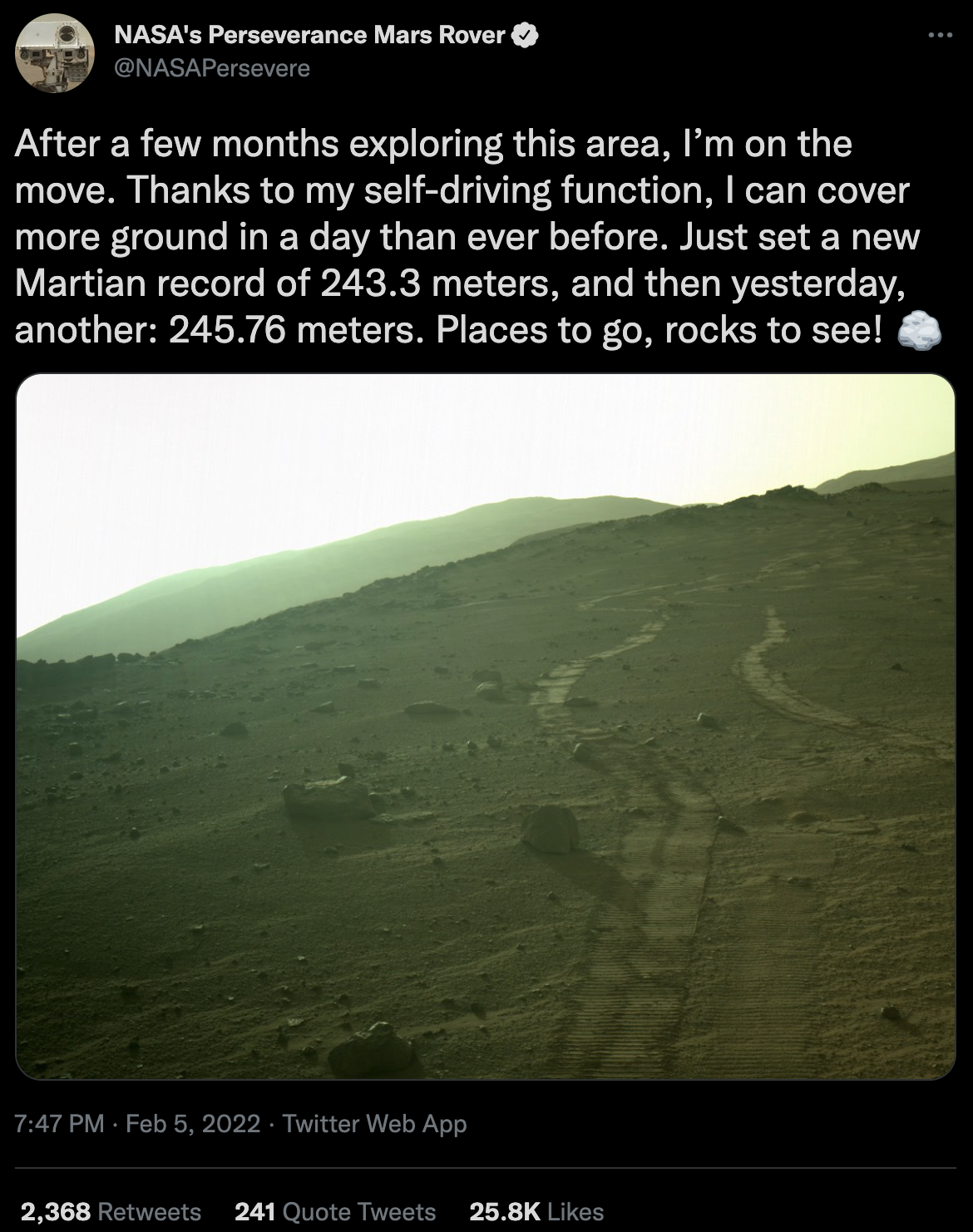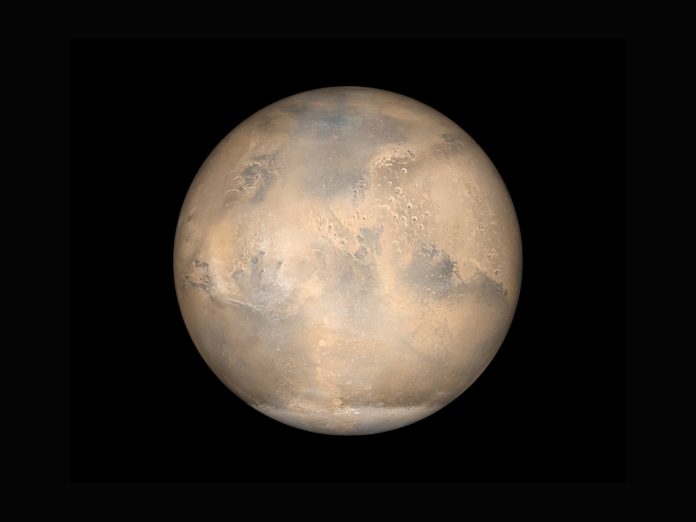Photo: NASA
By: Nick Gambino
While athletes are busy here on Earth medaling in the Winter Olympics, NASA’s Perseverance rover just broke the record for the longest drive on the surface of Mars in a single day. The little robot racked up 245.6 meters on February 6, which is equal to about 806 feet or 269 yards.
“She achieved the longest drive in a single sol by a Martian rover (the previous record has been held for nearly 17 years) and surpassed her own record of longest AutoNav drive,” a NASA tweet reads.

Both of these accomplishments are thanks to Perseverance’s onboard self-navigation system that allows it to be more deliberate in its travels. The AutoNav function allows the rover to detect things like loose sand and large obstacles (mainly rocks…for now).
The Curiosity rover doesn’t have this advanced feature on board, so it has to move slow, covering about 1/5th of the distance of the Perseverance in an hour. That’s only 20 meters to the newer rover’s 120 meters an hour.
If NASA personnel had to manually and remotely navigate the rover, it would only traverse about 200 meters a day which would severely lengthen the timeline of exploration and thus reduce how much the little guy could accomplish in its lifespan.
The Perseverance landed on the red planet a year ago this month and is on a mission to seek out signs of life or, rather, signs of ancient life. It’s been hard at work collecting rock samples and even had to take about a month-long break in December after getting rocks stuck in its tubing, making it incapable of collecting samples.
Luckily, the geniuses back here on Earth had some tricks up their sleeve and had Perseverance do a little dancing and spinning to shake the pebbles loose. That was successful, allowing it to get back to work. It returned to the site that gave it trouble and accomplished the rock-collecting objective.
Next, they are working on solving the question of how do you get the samples back to Earth. This problem-solving is currently at the center of the Mars Sample Return mission. That probably won’t happen for another 10 years or so as we still need to figure out how to make the return flight, something which has never been done.
And by “we” I mean “them.” My contributions would hit the ceiling at basic arithmetic.










